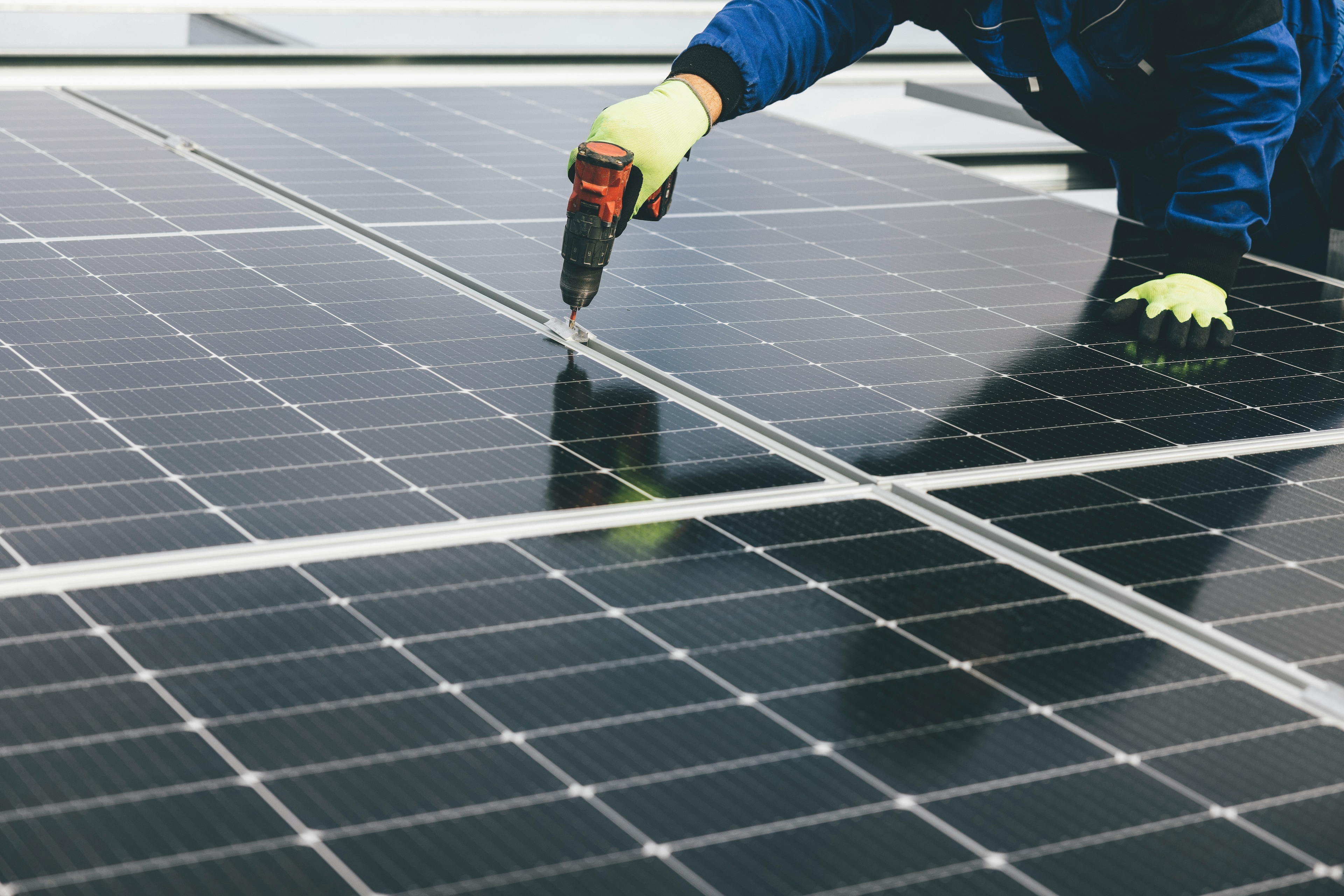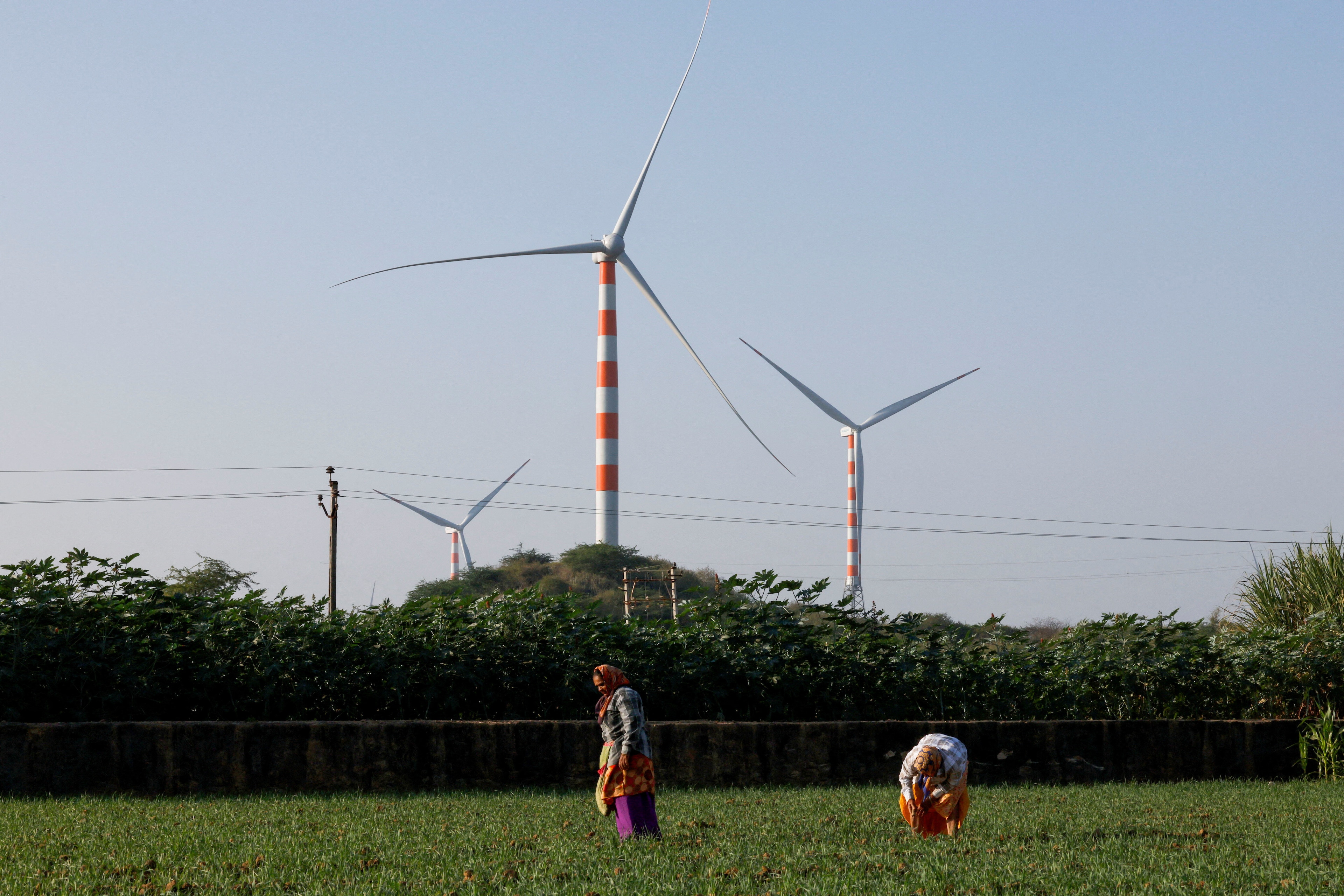Critical minerals enable the energy transition. We must learn to use them sustainably

Critical minerals like lithium are key to the energy transition — but their extraction presents its own social and environmental risks.
Image: REUTERS/Ivan Alvarado TPX IMAGES OF THE DAY
Douglas McCauley
Professor, University of California Santa Barbara; Member of Friends of Ocean Action; Director, Benioff Ocean Science LaboratoryStay up to date:
Energy Transition
- The technologies that enable the energy transition, from batteries to solar panels, rely heavily on critical minerals.
- But extracting them can have serious environmental and social consequences.
- We must find a way to reduce our reliance on them and extract the ones we do need more safely and more ethically.
The world agreed to transition away from fossil fuels at COP28, a necessity to avoid a climate crisis. However, rapidly shifting to renewable energy requires a substantial amount of critical minerals.
Responsibly sourcing minerals like copper, nickel and lithium is crucial. How we source these minerals will define environmental and social impacts locally and globally, but an equitable and sustainable strategy is possible.
We must reimagine existing approaches to sourcing minerals — doing so will also unlock promising new investment opportunities.
Critical minerals conundrum: harm and reliance
Three key challenge areas require specific attention: carbon emissions from mining, social and biodiversity impacts and gaps in circularity.
Energy-intensive mining for critical minerals could undermine efforts to reduce emissions. Fortunately, mining companies have the resources to invest in renewables, like green hydrogen as they develop, and in more efficient technologies to reduce overall emissions of mining operations.
Mining activities can pose environmental impacts beyond emissions. Water depletion, land-use change and contamination, for instance, cause biodiversity loss and negatively impact natural resources. Such environmental impacts, in turn, affect the well-being of local communities. Risks of encroaching on Indigenous people’s rights arise, too, as an estimated 54% of critical materials lie near Indigenous people’s land.
Ripple effects from mining may go unseen, often affecting the most vulnerable populations, according to Jocelyne Tsonang. Developing roads to access mines, for example, can enable access to regions that would otherwise be difficult to reach, increasing poaching, illegal timber exploitation and rebel mobility.
The value of critical minerals should factor in responsible sourcing that reduces impacts to people and biodiversity. Some companies have taken the lead to reduce impacts, recognizing shifting consumer demands and foreseeable regulations will shape future business, but policies can help drive further action.
Circular approaches have, thus far, not been brought to scale. Collection and recycling of batteries and renewable infrastructure has proven difficult, due to materials, design and transport distances. Materials fit for recycling are often sent overseas where regulations do not ensure protections for those left to manage the waste nor safeguard nearby communities affected by its disposal. Plugging these gaps is key to ensure sustainable access to the minerals key to the energy transition.
Three solutions to minimize the impact of critical minerals
The current growth in renewables has not yet reduced fossil consumption; it has simply covered the world’s growing energy demand. Critical minerals hold great power, but the way they are sourced can create supply-chain risks and hold serious repercussions. Redesigning approaches to reduce critical mineral demand will, therefore, be important to ensuring an equitable and sustainable energy transition.
1. Re-design products to reduce demand of more problematic minerals.
Innovation can reduce reliance on specific minerals by designing more energy-efficient technologies. Lighter batteries, for example, will require fewer energy-intensive minerals. Innovative technology can also aim to replace difficult-to-source and environmentally or socially harmful minerals with less harmful materials. Some batteries, such as lithium-iron phosphate batteries or sodium batteries, have begun to design out more problematic minerals, like nickel and cobalt.
Mining companies have begun to re-design products for industries outside core business operations, leveraging existing infrastructure to access new markets. Such designs tackle the striking rise in mining waste, with waste storage costs projected to increase by more than $1.6 trillion over the next three decades if business-as-usual mining practices continue. By developing ore-sand, an iron ore co-product for construction, mining company Vale reduced waste maintenance costs while simultaneously addressing the surge in demand for sand, which is often extracted from river ecosystems, marine environments or other similarly delicate habitats.
2. Reimagine business models to address the gaps.
Vale reimagined its business by incorporating circular design from the outset and creating an ecosystem of industries to make use of different materials often wasted. As the value of renewable resources increases, industries have begun to see the value of investing in more effective circular approaches across the value chain.
With Electric Vehicle batteries approaching end-of-life, society faces a rapid increase in waste. Cirba Solutions saw a market opportunity to recycle valuable batteries and recently partnered with Toyota to help the vehicle manufacturer reduce operation costs and emissions.
To prepare decision makers for the influx of spent batteries by 2030, Rocky Mountain Institute developed a Battery Circular Economy Initiative Dashboard. The tool enables better understanding of the scale of recoverable material in the US and its potential to meet gaps in supply.
3. Introduce and strengthen policies to safeguard the future.
Policies must aim to decrease demand, for example by reducing energy consumption, and increase supply, such as through recycling incentives. Policies calling for smart cities can promote energy efficiency, reducing critical mineral demand. Increasing accessible public transportation and walkable neighbourhoods can influence mobility choices and substantially decrease transportation emissions, with associated health benefits from reduced air pollution and increased physical activity. This includes policies to encourage efficiency with energy-hungry technology like AI.
Regulations and policies that protect people and environments in countries that consume renewables should ensure regulations follow the waste sent to other countries to protect vulnerable populations abroad.
Policies must incentivize effective recycling. Various factors influence battery recycling costs, from economies of scale to mode of transportation, and high recycling costs make waste generation more profitable than reclamation. Policies that encourage material recovery, re-use and waste reduction, such as the Batteries Regulation recently adopted by the EU, will increase critical mineral supply while reducing carbon emissions. Manufacturing standards that make minerals easier to recycle will also reduce recycling costs, further incentivizing material recovery.
Public investment in circularity research will further address barriers to recycling and improve recycling capabilities.
How is the World Economic Forum facilitating the transition to clean energy?
Forward-thinking for critical minerals
We have just committed to triple our energy capacity from renewables. The energy mix of the future will be completely different than the past decade. The way we source, refine, manufacture and reuse materials for the energy transition — and the implications for our future — will require a complete paradigm shift. Decision-makers must prepare for these rapid shifts in demand and their implications.
To this end, advanced economies should support and prepare governments in communities that depend heavily on critical mineral extraction. In doing so, they can create enabling environments that ensure successful participation in alternative economies and reap their benefits.
Decision-makers are key to unlocking this change. Investments in new and diverse sources will promote supply chain resilience; policies that incentivize recycling will spur businesses to develop new solutions to tackle anticipated waste; and requirements for energy efficiency will reduce critical mineral demand. We have the opportunity to shape our future to protect people and preserve natural resources for generations to come.
Elena Perez and Anis Nassar, Council Managers for the Global Future Council on Responsible Resource Use, contributed to this Agenda article.
Accept our marketing cookies to access this content.
These cookies are currently disabled in your browser.
Don't miss any update on this topic
Create a free account and access your personalized content collection with our latest publications and analyses.
License and Republishing
World Economic Forum articles may be republished in accordance with the Creative Commons Attribution-NonCommercial-NoDerivatives 4.0 International Public License, and in accordance with our Terms of Use.
The views expressed in this article are those of the author alone and not the World Economic Forum.
Forum Stories newsletter
Bringing you weekly curated insights and analysis on the global issues that matter.
More on Energy TransitionSee all
Charles Bourgault and Sarah Moin
August 19, 2025
Jürgen Karl Zattler and Adrian Severin Schmieg
August 18, 2025
Piyush Verma
August 18, 2025
Valentin Chomel and Jacques-Alexis Verrecchia
August 14, 2025
Gaurav Upadhyay and Labanya Prakash Jena
August 8, 2025
David Timis
August 8, 2025





